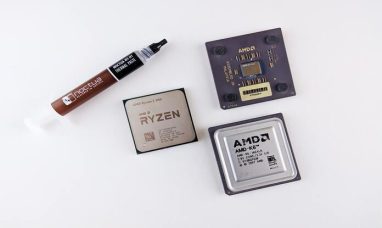After examining Pixelworks (NASDAQ:PXLW) and its financials, particularly its outlook in the mobile segment, I am not optimistic about its long-term investment potential. Despite being in operation for some time, the company has yet to achieve profitability. Hypothetically calculating the point at which operating margins improve enough for the company to turn a profit, it becomes clear that significant improvements are necessary. Given the worsening margins and uncertain future, I do not consider Pixelworks a viable long-term investment at present. Major improvements in margins are needed in the coming years to change this perspective. As such, I am issuing a “sell” rating for the company.
Overview
Pixelworks specializes in manufacturing integrated circuits (ICs) for image processing in cinema projectors, home entertainment, and the mobile sec
Mobile Segment Outlook
The mobile market has experienced soft demand due to excessive inventory, but this is expected to change within the next six months to a year as demand for phones, tablets, and similar devices increases. However, even when demand picks up, it is difficult to foresee the company’s performance improving significantly. Pixelworks has struggled over the past decade, primarily due to high operating expenses.
Pixelworks’ ICs are used by OnePlus, a popular mobile company. OnePlus has gained popularity rapidly, and if this growth continues, it could provide a revenue boost. However, there is a lack of up-to-date sales figures, which may indicate a decline in purchases due to high prices or other factors. The upcoming OnePlus Ace and OnePlus 12 will feature the new X7 visual processor. Additionally, Pixelworks’ clients include Honor and Asus ROG, with Honor potentially offering growth opportunities as China recovers from COVID restrictions and consumer spending increases.
Margins
The company’s margins are a major concern. In the most recent quarter, gross margins declined by approximately 9% compared to the previous quarter. Pixelworks faced negative sentiment in the mobile sector and macroeconomic headwinds at the start of the year. Cost-cutting measures to achieve profitability in the near future are not evident, which is worrisome.
Although year-on-year margin figures have improved, I expect them to decline in FY23 due to the negative impact seen in Q1 ’23. Without significant improvements in efficiency, I do not consider Pixelworks a viable long-term investment. The current stock price may present a speculative opportunity, but the risks are high.
Financials
As of Q1 ’23, Pixelworks held around $56 million in cash with no debt, which is positive. However, the cash reserves may need to be used to sustain operations, as the company has been making losses consistently. The current ratio, influenced by the high cash reserves, stood at over 5 by the end of FY22, which is higher than desired. A range of 1.5 to 2.0 is generally considered ideal.
Efficiency and profitability, measured by ROA and ROE, respectively, are extremely poor. This further confirms the company’s inability to utilize its assets and shareholder capital efficiently, resulting in a significant decline in share price.
Pixelworks lacks a competitive advantage or moat. Return on invested capital is below 10%, indicating the absence of competitive advantage.
While these metrics may appear to show upward trends, the decline in margins during Q1 ’23 suggests a potential decline in these metrics as well.
Valuation
For revenue projections, I assumed a 14.5% compound annual growth rate (CAGR) over the next decade, which I consider reasonable. While the company achieved only 6% growth over the past decade, it experienced growth of 35% in ’21 and 27.3% in ’22.
In the base case scenario, I assumed an 18.3% CAGR, while the conservative case assumed 12.5%.
In my valuation approach, I assumed significant reductions in operating expenses, leading to a positive net margin by ’28. By ’32, I projected net margins of around 14%, which is optimistic. Due to the financials and the hypothetical net margin expansion, I applied a 45% margin of safety to account for uncertainties.
Based on this model, the intrinsic value of the company, assuming profitability by ’28, is $1.38 per share, indicating an overvaluation at the current stock price.
Closing Remarks
At present, I cannot recommend investing in Pixelworks. The speculative nature of the investment, combined with poor financials, raises concerns. There are more attractive options in the semiconductor industry, such as Qualcomm (NASDAQ:QCOM), which I recently covered and believe to be a compelling investment opportunity. It is surprising that Pixelworks, despite being established in ’97, has yet to achieve profitability.
Significant internal changes, such as management restructuring, are needed for the company to improve. However, I believe it will take many years for Pixelworks to become profitable. It may be advisable to sell positions and reassess the stock’s performance in the future, particularly with regard to margin improvement.
Featured Image: Freepik @ wirestock







